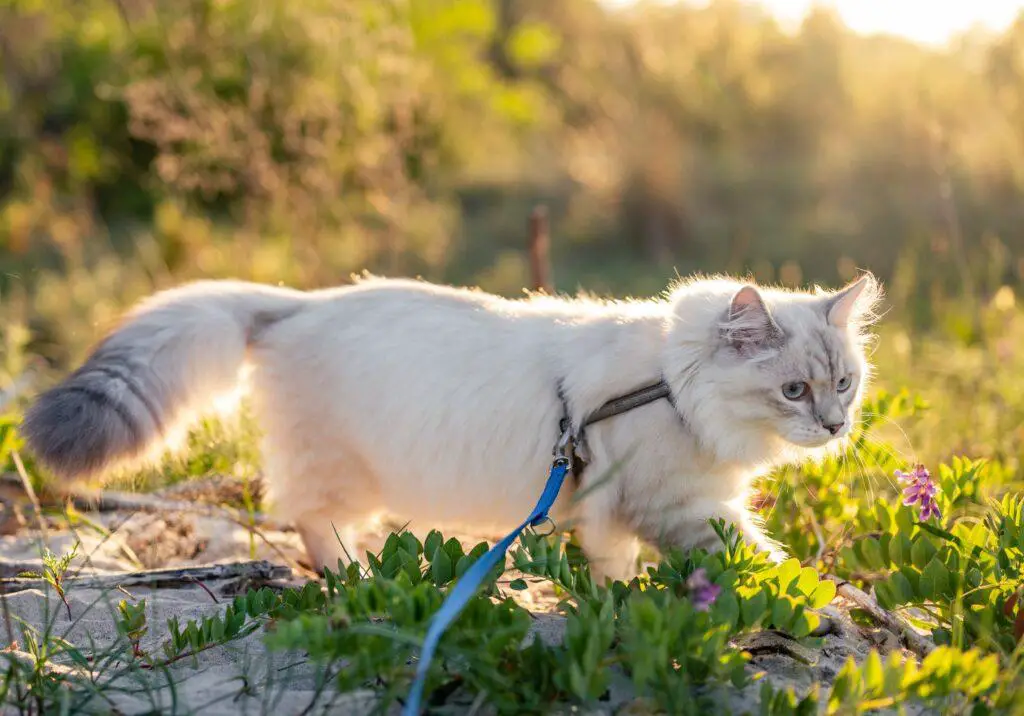Introduction:
Cats are known for their independent and sometimes unpredictable behavior. While many cat owners adore their feline companions, biting can be a concerning and painful behavior problem to deal with. If your cat frequently bites you or others, it’s essential to address this issue promptly and effectively. This comprehensive guide will provide you with a step-by-step approach to train your cat to stop biting, ensuring a more harmonious and enjoyable relationship between you and your furry friend.
Understanding Why Cats Bite

Before diving into the training methods, it’s crucial to understand why cats bite in the first place. Cats may bite for various reasons, including:
Playfulness: Kittens and young cats often bite during play as a way to explore and interact with their environment.
Fear or Anxiety: Cats may bite when they feel threatened or anxious. It’s their way of defending themselves.
Overstimulation: Cats have a sensory threshold, and when they reach their limit for petting or stimulation, they may bite to signal that they’ve had enough.
Pain or Discomfort: Cats in pain may lash out by biting, so it’s essential to rule out any underlying health issues.
Predatory Behavior: Cats have an instinctual prey drive, and they may bite when they are in a hunting or stalking mode.
Territorial Aggression: Some cats become territorial and may bite to defend their space or possessions.
Now that we’ve explored the reasons behind cat biting, let’s delve into the steps you can take to train your cat to stop this behavior.
1. Consult a Veterinarian:
If your cat’s biting behavior has suddenly changed or you suspect a health issue, consult your veterinarian first. Pain or discomfort could be an underlying cause of aggression, and addressing this is crucial.
2. Use Positive Reinforcement:

Positive reinforcement is the cornerstone of training any animal, including cats. Whenever your cat behaves well and doesn’t bite, reward them with treats, praise, or affection. This encourages good behavior and reinforces the idea that not biting leads to positive outcomes.
3. Playtime:
Cats have a lot of energy, and playtime is an excellent way to redirect their biting tendencies. Provide interactive toys like feather wands, laser pointers, or toy mice to engage your cat in active play. This not only expends their energy but also satisfies their natural hunting instincts.
4. Socialization:
If your cat bites during play, teach them that hands and feet are off-limits as toys. Instead, use appropriate toys to engage them in play. When they bite, say “no” firmly and redirect their attention to a toy.
5. Set Boundaries:
Cats need clear boundaries. If your cat bites during petting or handling, pay attention to their body language. When they show signs of discomfort (such as ears pinned back or tail twitching), stop the interaction immediately. This teaches your cat that they have control over the interaction.
6. Desensitization:

Gradually desensitize your cat to situations that trigger biting. For instance, if your cat bites during nail trimming, start by gently touching their paws without attempting to trim. Reward them for tolerating this, and over time, progress to actual nail trimming in small, manageable steps.
6. Obedience Training:
Basic obedience commands like “sit,” “stay,” and “leave it” can be useful in managing your cat’s behavior. Use treats and positive reinforcement to reward them for obeying these commands, and it can help redirect their biting tendencies.
7. Use Deterrents:
If your cat has a habit of biting specific objects or areas, use deterrents like double-sided tape, bitter-tasting sprays, or aluminum foil to make those areas less appealing.
8. Provide Safe Retreats:

Cats need a space where they can retreat and feel safe when they want to be alone. Create a comfortable hiding spot or a cozy cat bed where your cat can go when they need a break from interaction.
9. Consistency is Key:
Be consistent in your approach to training. Everyone in your household should follow the same rules and use the same commands. Inconsistency can confuse your cat and make training less effective.
10. Consult a Professional:
If your cat’s biting behavior is severe or persists despite your efforts, consider seeking the help of a professional animal behaviorist or trainer. They can provide personalized guidance and strategies to address the issue.
11. Patience and Understanding:
Training a cat takes time and patience. Understand that your cat may not change their behavior overnight. Be patient, and celebrate small victories along the way.
12. Attention-Seeking Cat Bites:

Understanding and Addressing the BehaviorCat bites for attention are common, but they can be problematic. Cats may resort to biting when they crave interaction or play. To curb this behavior, provide ample playtime, enrichment, and affection. Redirect biting to toys and employ positive reinforcement to encourage alternative ways of seeking attention.
13. Catnip:
A Magical Attention Grabber Catnip, derived from the Nepeta plant, can be a fantastic tool to grab your feline friend’s attention. Offering catnip-infused toys or sprays can engage your cat’s senses and provide hours of entertainment. Remember, not all cats react to catnip, so observe their response and use it to enhance playtime and bonding.
14. Teaching Your Cat Not to Bite
Cats may bite for various reasons, from playfulness to fear. To teach your cat not to bite, use positive reinforcement, redirect their behavior to toys, and set boundaries. Consistency, patience, and understanding are key to building a harmonious relationship with your feline friend.
15. Cat Bites Finger: Causes and Solutions
Cat bites to fingers can occur due to fear, playfulness, or overstimulation. To prevent such incidents, learn to read your cat’s body language, respect their boundaries, and provide interactive toys. Seek immediate medical attention if bitten, as cat bites can lead to infections.
16. Stop Cat Biting Hands: Effective Strategies

To prevent cat bites on hands, use positive reinforcement, redirect their playfulness towards toys, and set boundaries. Recognize signs of overstimulation or fear in your cat, and stop interactions accordingly. With consistent training and patience, you can enjoy a bite-free bond with your feline companion.
17. Disciplining a Biting Cat: Safe Approaches
Avoid physical punishment when dealing with a biting cat, as it can escalate aggression and damage your bond. Instead, employ positive reinforcement techniques, like rewarding good behavior, redirecting play with toys, and providing consistent training. Seek professional advice if biting issues persist, focusing on positive, humane solutions.
Conclusion
Training a cat to stop biting requires a combination of understanding, patience, and positive reinforcement. By addressing the underlying causes, setting clear boundaries, and using effective training techniques, you can help your cat develop better behavior habits and strengthen the bond between you and your furry friend. Remember that every cat is unique, so it’s essential to tailor your training approach to your cat’s specific needs and personality. With dedication and consistency, you can enjoy a harmonious and bite-free relationship with your beloved feline companion.






